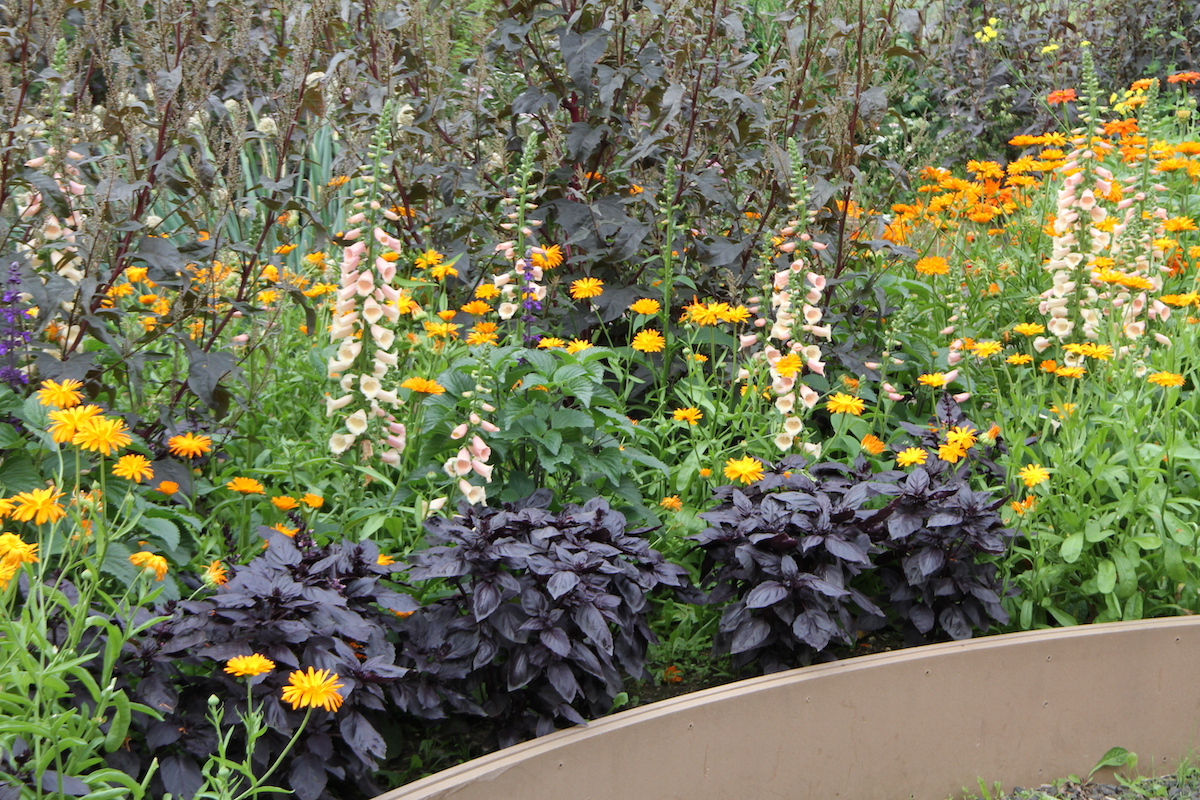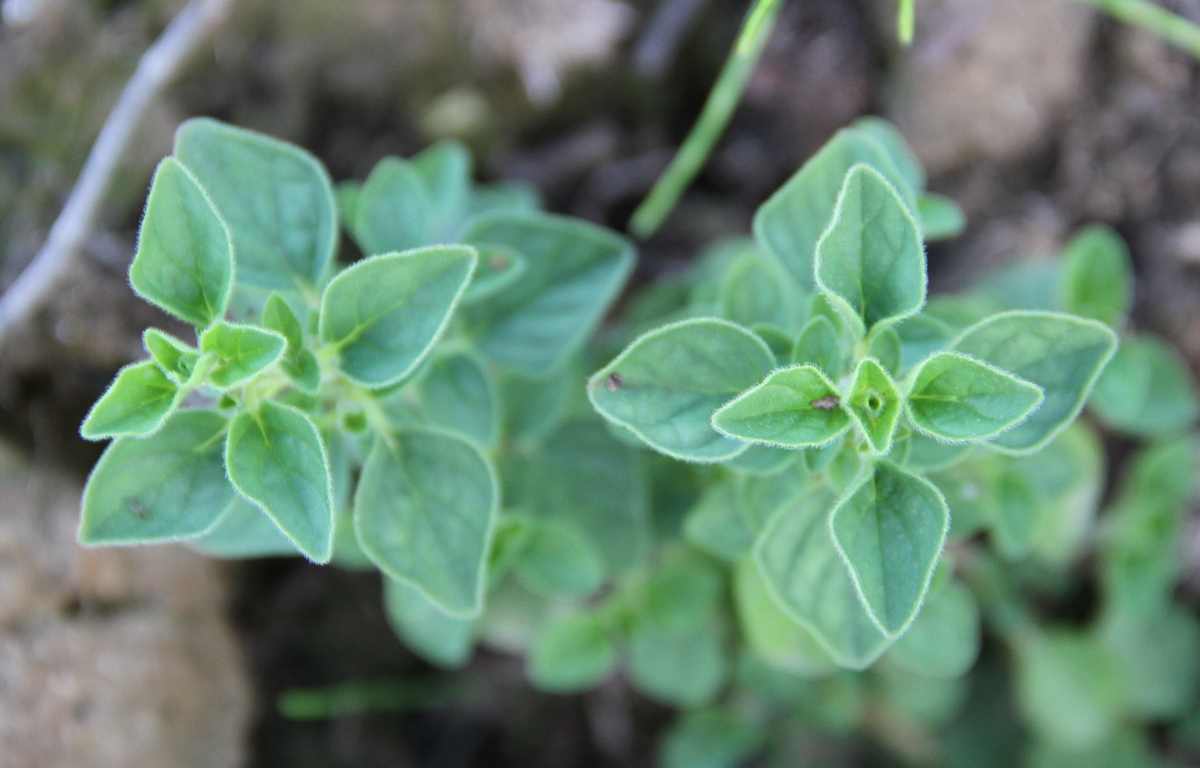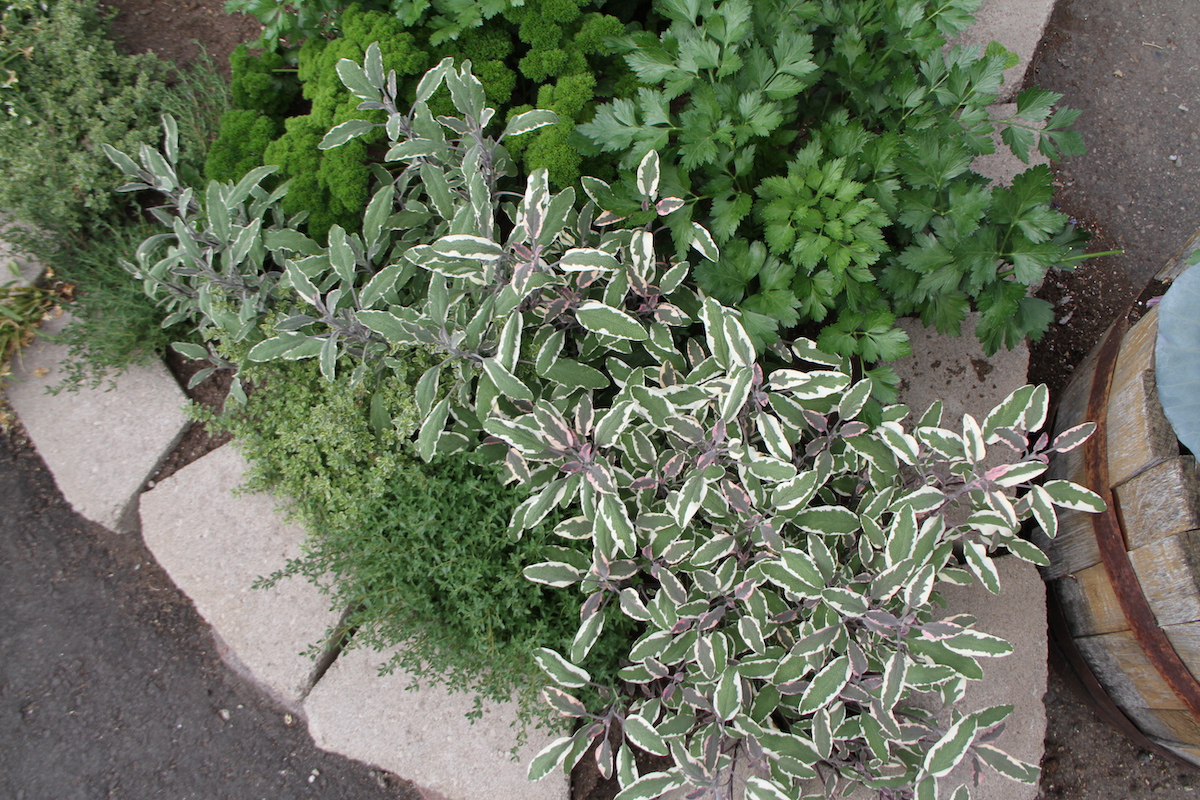In the summer, there’s no reason to settle for dry, colorless herbs that may have been in your cupboard just a little too long. Simply trot out to your backyard herb garden, ideally as close as possible to your kitchen, and snip your herbs as needed. Another advantage? They’re a great thing to grow in a small space.

In the winter, herbs are one of the easiest edible plants to grow indoors as well. You’ll need grow lights and some type of aeroponic or hydroponic system also helps.
What herbs lack in calorie count and volume, they make up for in flavor and variety. In addition to a wide range of herbs like basil or Perilla (shiso), there are many, many varieties of each herb. For example, there are sweet basil, purple basil, lemon basil and on it goes.

Here, purple basil is interplanted with calendula and fox glove. Purple basil is tasty, but pesto made with purple basil is very unappetizing looking.
Give herbs similar growing conditions that you would give vegetables—neutral pH, sunny location and well-drained, fertile soil—and they will thrive. But there are several ways that herbs differ from growing vegetables. One big difference is that you’ll generally only need to grow one or two plants, unless it’s something like basil that you like to eat a lot of.
Herbs also grow more slowly. Unless you want to spend five months nursing along your lavender, or three months coaxing your chives and fennel into a transplantable size, then consider buying some of the slower growing plants and plant things that grow more quickly, such as chervil, basil, anise and dill, even directly seeding them in your garden in some cases. You must also be aware that some herbs must be started from cuttings and not from seed, for example, thyme, tarragon, spearmint and rosemary.

English thyme
You can grow most of the same herbs in Alaska that you can in warmer locations—the big difference being that many will not survive our harsh winters so they’ll have to be planted again each year. Chives and Siberian onions do come back prolifically each year and others may survive mild winters, especially if planted near a house. Some, like cilantro, are prone to bolting.
Some herbs, such as lemongrass, ginger and Vietnamese coriander, can be grown in a high tunnel or greenhouse. Basil also benefits from being grown in a high tunnel or under a low tunnel.
Clip herbs as needed throughout the summer with scissors or a sharp knife. Generally, they are most flavorful before they flower and less flavorful afterward. Using your herbs routinely will encourage branching and more leaf production and reduce flower and seed production. Many herb flowers are edible, but the texture can be a bit much. Don’t harvest more than about a third at a time and no closer than four inches to the ground. For woody herbs like thyme or oregano or rosemary, you’ll want to strip the leaves from the woody portions of the plant. For dill, basil, and more herbaceous herbs (as opposed to woody), you can eat the stem as well although some may prefer the more delicate leaves to the harder stems. Some herbs like chervil don’t dry well and are best fresh.

Oregano
The ways you can use herbs are endless—from teas and drinks to cookies to soups to sauces to breads. My favorite way to use sage is in tea. A better question is, what can’t you use herbs in? Also, there are several ways to preserve them. To extend their fresh life, simply place some like basil or mint in a vase and treat them like you would a bouquet of flowers.

Sage

Pineapple sage surrounded by two types of thyme and parsley.
Others, especially those with woody stalks, can be hung in a bundle to dry. To dry tender-leaved herbs like basil, use a dehydrator or a screen. Stuff any combination of herbs in a clean jar and add a white or rice vinegar to add flavor to your next dish or salad. Blend about 2 cups of an herb with 1/2 cup of oil and refrigerate for four days or freeze. This can then be used as the start of your pesto or other sauce.
For more information on growing, storing, and cooking with herbs, check out UAF Cooperative Extension Service’s excellent publication on the subject—An Alaska Herb Garden as well as two short YouTube videos, on Cultivating Herbs and Using and Preserving Herbs.
Previously published in the Fairbanks Daily Newsminer August 12, 2017. Updated January 7, 2021.